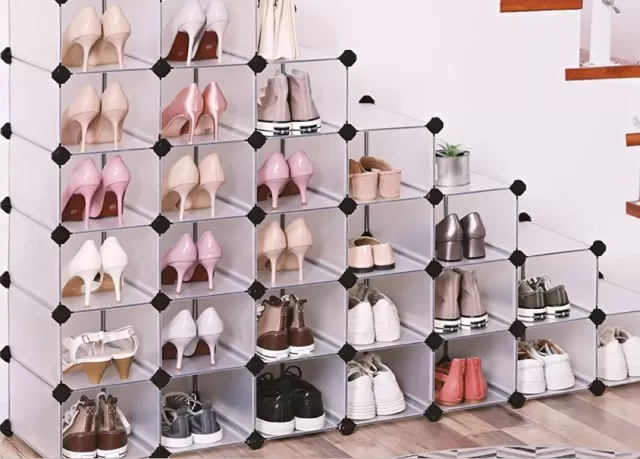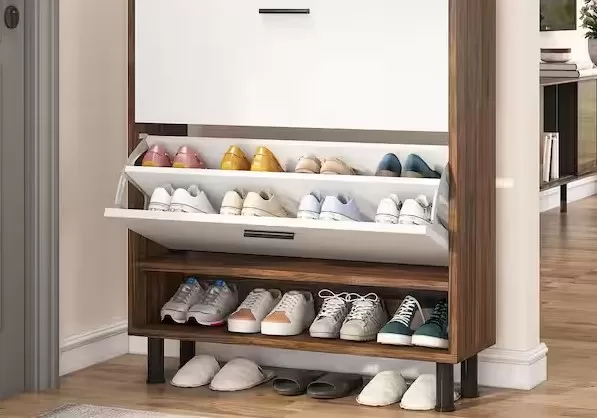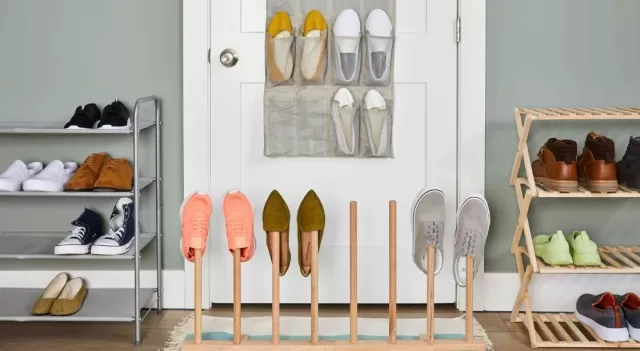With the right approach, you can effectively declutter and store your shoes to ensure easy access when needed.

Organizing shoes can be a challenging task due to their abundance and size.
However, with the right approach, you can effectively declutter and store your shoes to ensure easy access when needed. As a professional organizer, I’ve gained valuable insights into effective shoe-organizing methods.
In this guide, I will share my top tips and strategies to help you cut down on shoe clutter and create a well-organized system for your footwear.
Shoe Organization Ways to Keep Closets Tidy

Simplify Your Shoe Collection.
Before diving into any home organization project, it’s important to declutter and eliminate items that are no longer useful or necessary.
Take the time to go through your shoe collection and donate or discard shoes that no longer fit, aren’t comfortable, or are damaged. This will help you have a clearer view of what you have and make organizing decisions easier.
Additionally, assess which shoes require cleaning and give them a thorough cleaning before organizing them.
Categorize Your Shoes.
Once you’ve narrowed down your shoe collection, categorize them based on type.
Separate your sneakers, sandals, heels, and other types of shoes. Sorting them into categories will give you a better understanding of how to store and organize them effectively.
Consider sorting them further by season, formality, and frequency of use to make it easier to find the right pair when you need them.
Evaluate Your Storage Space.
Take a look around your home and identify suitable areas to store your shoes.
Assess the available space and get creative, especially if you have limited storage options. While it’s ideal to keep all your shoes together, you may need to divide them into different areas based on your available space.
The key is to keep similar types of shoes together to streamline the organization process.
Organize Everyday Shoes.
Shoes that you wear frequently should have a designated spot near the entryway or wherever you typically enter and exit your home.
Consider using a shoe rack, a standing shoe cubby, or an over-the-door shoe organizer for easy access to your everyday shoes. If you live in an area with inclement weather, invest in a boot tray to store wet or dirty boots.

Store Formal Shoes.
Special occasion shoes that you only wear occasionally should be stored separately from your everyday shoes.
Find a space in your primary closet or spare bedroom closet to keep these formal shoes. Consider using a heel rail or protective shoe boxes to organize and protect your high heels or delicate footwear.
Rotate Shoes Seasonally.
If you don’t have enough space to store all your shoes year-round, consider rotating them based on the seasons.
Store off-season shoes under the bed using specific under-bed storage containers or drawstring bags. For boots, consider using boot clip hangers to hang them and prevent them from flopping over.
Choose the Right Shoe Organizers.
Once you’ve identified the storage areas for your shoes, select the appropriate shoe organizers to maximize your space.
Options include hanging shoe cubbies, decorative baskets on shelves, and storage benches or ottomans with hidden compartments. These organizers will help keep your shoes organized and easily accessible while optimizing your available space.
Remember, organizing your shoes is an ongoing process, so make it a habit to regularly assess and declutter your collection to maintain an organized and efficient storage system.
Celebrate your accomplishments by taking pictures of your organized shoes and sharing them for inspiration.
*The information is for reference only.